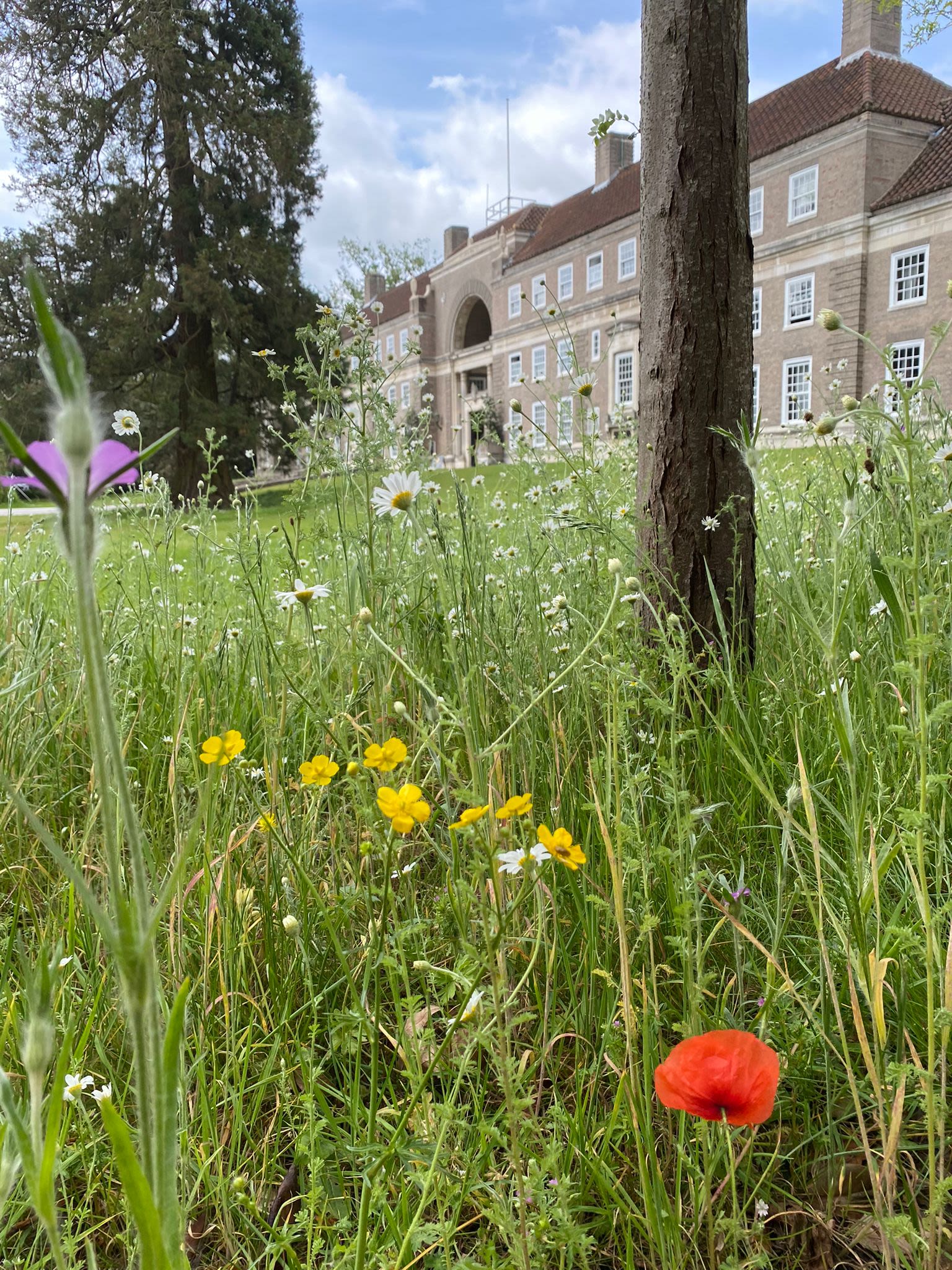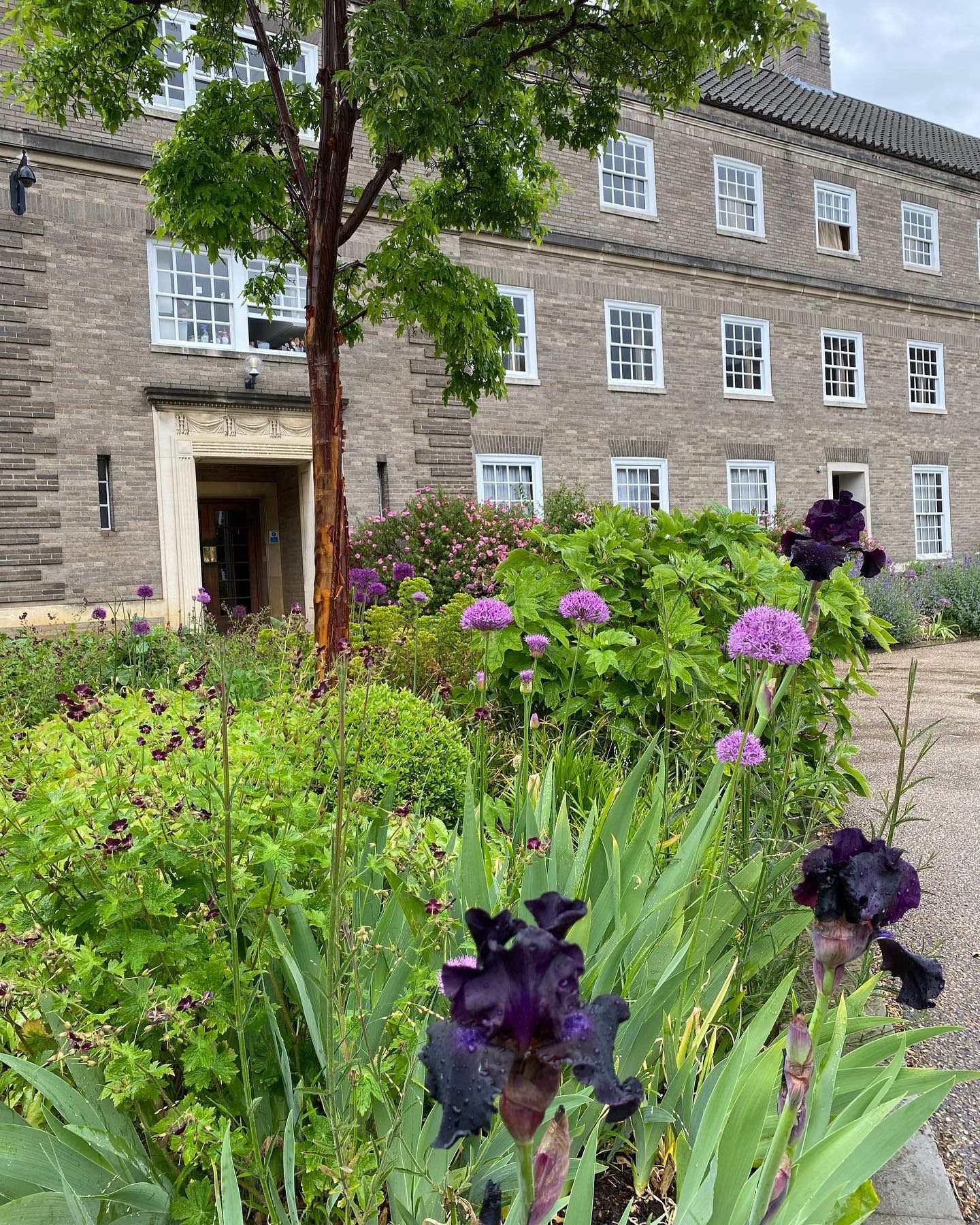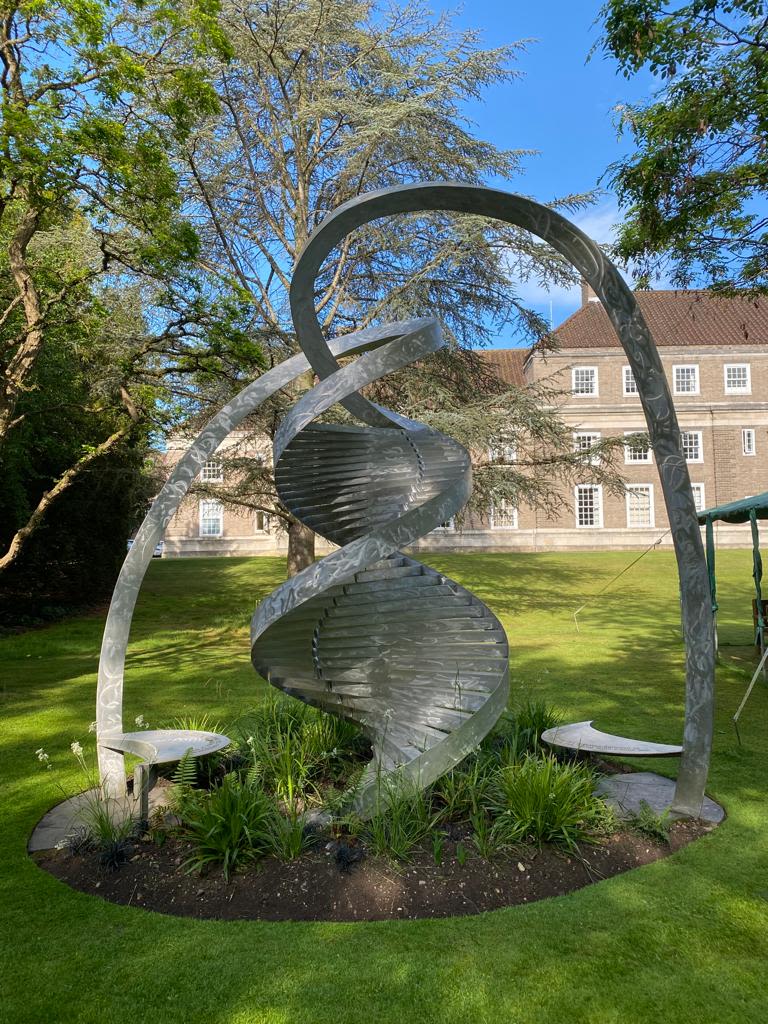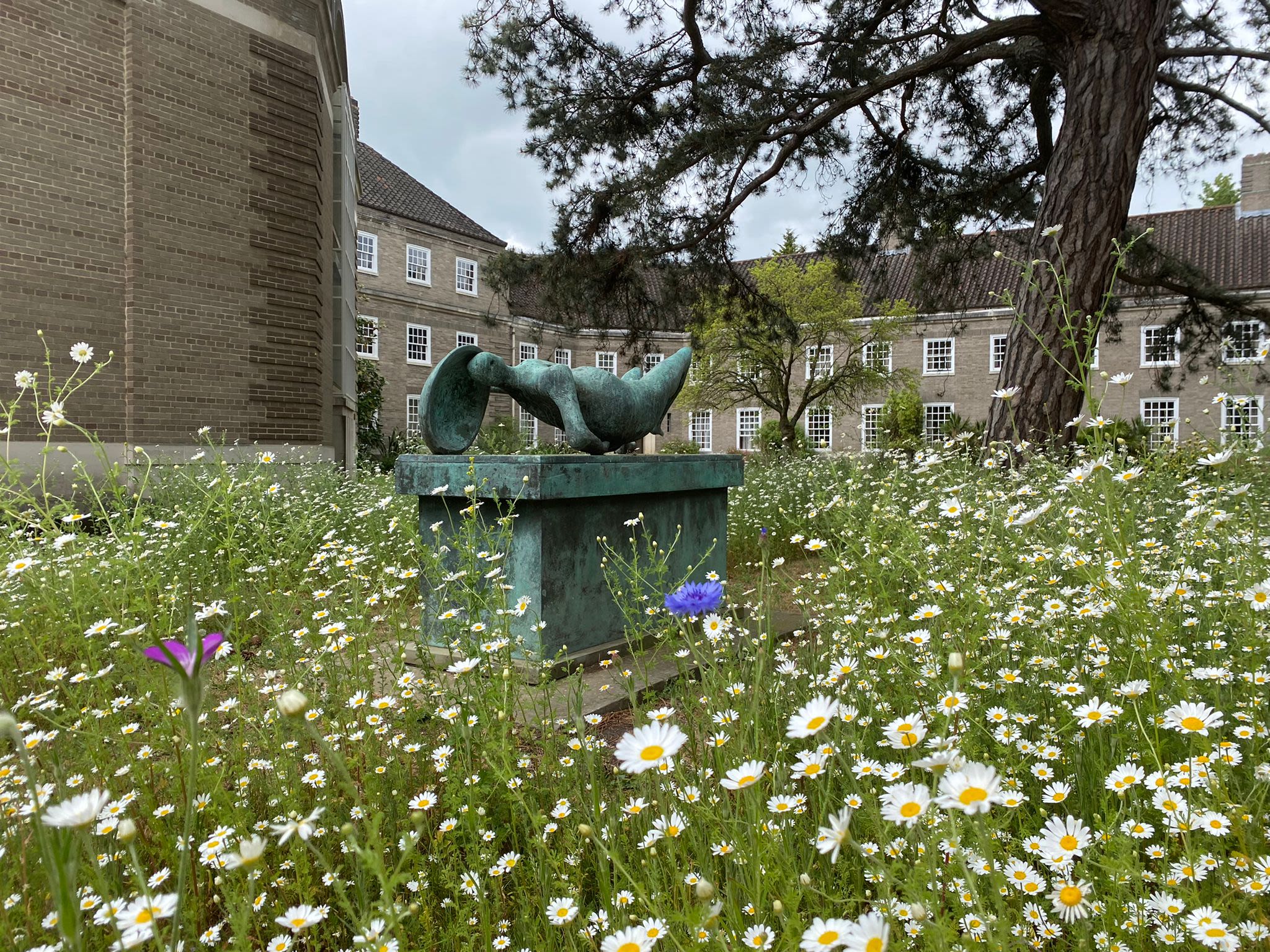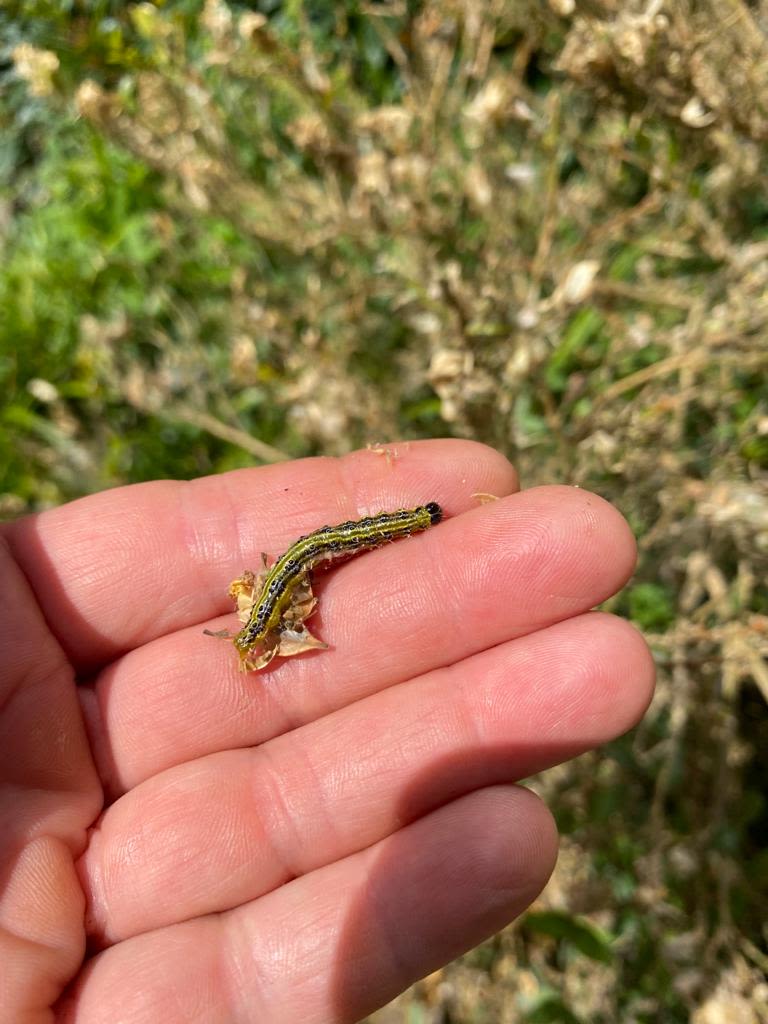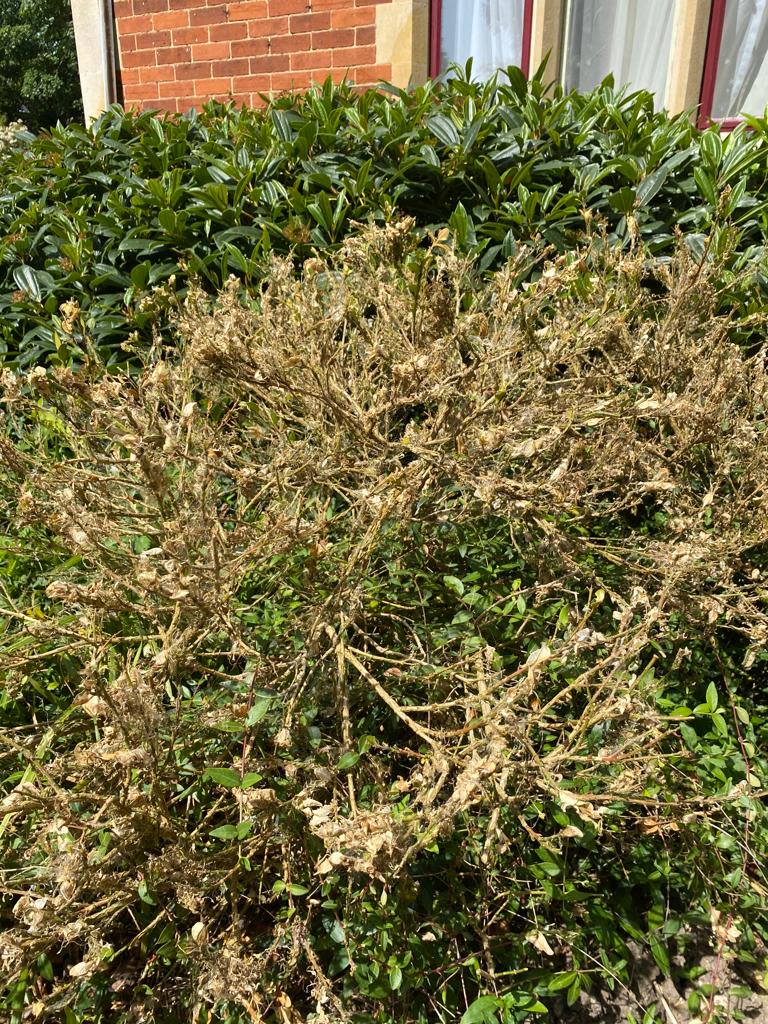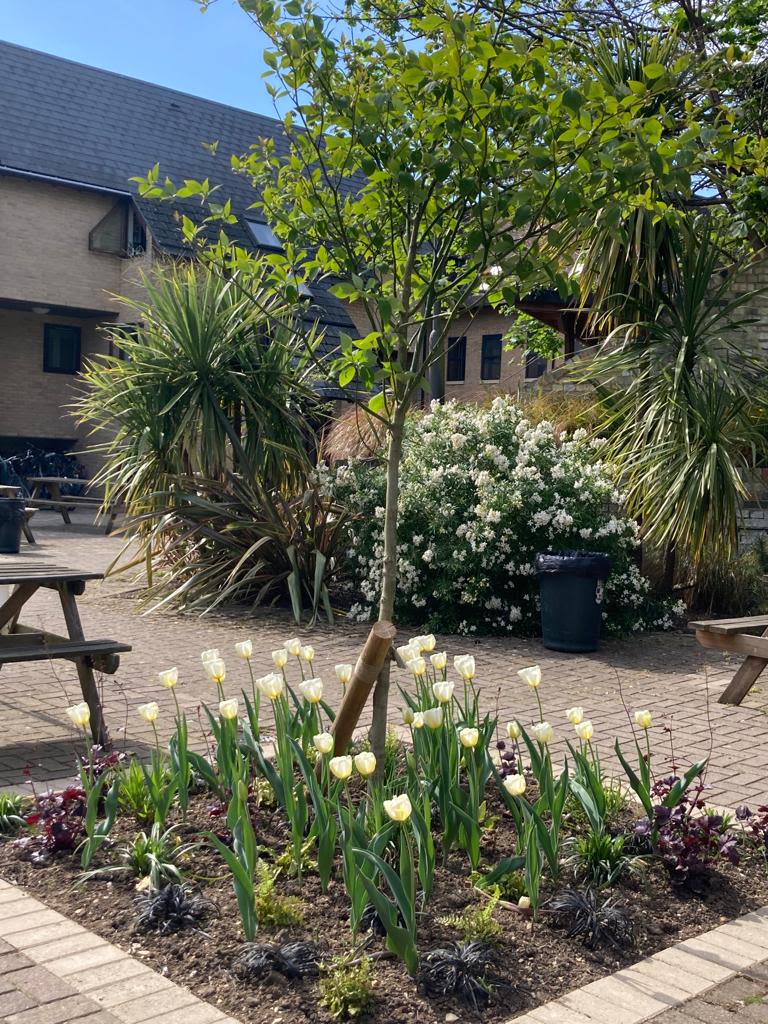From the Gardens
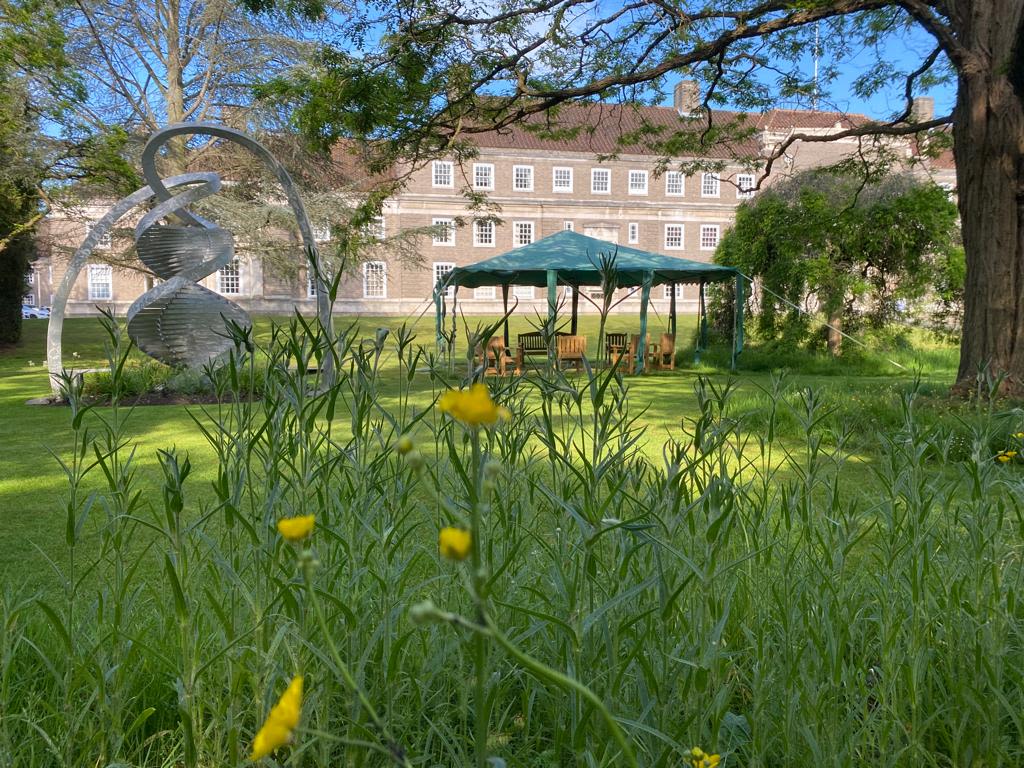
This past year has flown by as we desperately tried to return to ‘normal’ and catch up with the backlog that the pandemic created. For the first time in quite a while, the Gardens Department was at full strength and all working on-site; so it was (and still is) full-throttle to rectify the neglected areas, which were a consequence of the multiple lockdowns, whilst maintaining all other areas to the high standards for which we are renowned.
Riding high on the success of the newly established ‘wild area’ on one of Memorial Court front lawns, another area was created on the other side to mirror it, and the grassed area around Henry Moore’s Falling Warrior was prepared and sown with wildflowers. Both new areas took well and began flowering from mid-May. We have had extremely positive feedback. Not only are the areas pleasing aesthetically but also, most importantly, they are improving the biodiversity within the College. In June 2021 and June 2022, Dr Ed Turner (Fellow) gave a highly interesting and informative talk to College members on the biodiversity of our wild areas. We always look forward to learning about his findings and hearing his insights in these talks. In a similar vein, we have purposely left a few areas of lawns to grow long – think of it as an extended ‘no mow May’ – which also improves the habitat for increased biodiversity.
We continued to improve several areas across the College, including the DNA sculpture on Memorial Court front lawn. It was underplanted with an herbaceous mix of Luzula, ferns, grasses, and black turf lilies. This has greatly improved the planting around such a prominent, important sculpture.
Castle Court has seen much improvement after it was completely shut down during the pandemic. Weekly maintenance resumed enabling us to slowly regain control of the borders. The three Silver Birches in Castle House courtyard were felled so the block paving could be repaired and we replanted with three Cornus contraversa (the Wedding Cake tree), underplanted with Ophiopogon planiscapus Nigrescens, Liriope muscari, and Hakonechloa macra (among others), building on the Japanese theme. An allotment area behind Braeside was developed for the students to start growing their own fruit and vegetables. If you would like to follow their progress, you can do so by their Instagram account here: https://www.instagram.com/claregrowers/
These areas where students can nurture their own produce, getting their hands in the soil and connecting with the earth, hold so much value and benefits for health and wellbeing.
The Scholars’ Garden received particularly high praise in the spring and our olfactory receptors were delighted by the changing scents as we moved from the winter flowering Lonicera fragrantissima (honeysuckle), to the spring flowering Syringa (lilac) and the summer blooms of Lathyrus odoratus (sweet peas). Ashby Court also delivered a fantastic display, a testament to the excellent work of the Gardens team, as did all the grounds and gardens on the Memorial Court site. Despite spring 2022 being so dry that the phrase ‘April Showers’ seems no longer appropriate (we recorded only 7.5mm in April), the borders looked stunning and filled up nicely for their summer displays.
The Avenue’s spring bulb display was magnificent, some even say the best they have seen in years, and it will be hard to top it next year.
In the Fellows’ Garden, behind the scenes of the builders’ compound, we managed to regain control of what is left of the mixed border. Building works and repeated lockdowns meant that it had been left to fend for itself for two years. The only way to tackle the build-up of annual and perennial weeds was to dig up every single salvageable herbaceous plant and thoroughly dig through the entire border – twice! We covered it with mypex sheeting to weaken the Calystegia sepium (bindweed) and prevent the Galium aparine (Cleavers) from germinating. For the herbaceous plants we saved, we created temporary nurseries in the yard and Tropical Garden, where they can happily stay until we need them for the replanting of the Mixed Border.
As throughout the Cambridge area, the dreaded box moth caterpillar has decimated much of our box hedging and large stand-alone box shrubs. We are treating it by way of a bacterial control called Bacillus thuringiensis sub Aizawai. The jury is still out as to whether this is an effective control or not, and if an improvement is not seen within the year, an alternative replacement to box will have to be considered. Sadly, other Colleges are reporting the same problem as Buxus is a very popular shrub in these historical settings, so the food source for these caterpillars is abundant!
It would be remiss of me not to mention the record-breaking temperatures and drought experienced by most of the country throughout July and August 2022. Thankfully, our drip irrigation system in the main borders proved itself invaluable at keeping plants upright and healthy. The lawns, however, are another matter: we had to let them die off, as it is not very environmentally friendly to use sprinklers. That being said, some decent rain has seen them green up again in no time! In extreme weather, there are always winners and losers. The dahlias and cannas did well, whereas shrubs like Viburnum and Hamamelis (witch hazel) struggled and showed signs of drought stress.
In the Gardens team, Damien Watt is coming to the end of his apprenticeship. He is our first apprentice under the new intercollegiate scheme run by Keits Training Services. Damien has shown great enthusiasm throughout his placement and has honed his skills and knowledge with us. He will undoubtedly have a successful career in horticulture when he leaves Clare College.
